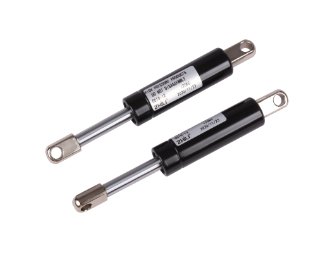If you are interested in our products ,please contact our team
Gas springs are essential components used in various industries for their ability to provide controlled and reliable force. They offer a wide range of applications, automotive and aerospace to furniture and medical equipment. In this article, we will delve into the different types of gas springs available in the market and explore their unique features.
Gas springs, known as gas struts or gas lifters, are mechanical devices that use compressed gas contained within a cylinder to exert force. They consist of a piston rod, cylinder, and a pressurized gas chamber. When the gas is compressed, it stores potential energy, which is released when the gas spring is activated.
Compression Gas Springs:
Compression gas springs are the most common type and are designed to resist compression forces. They are widely used in applications such as automotive hoods, hospital beds, and office chairs. These gas springs provide support and assist in lifting heavy objects while ensuring controlled movement.

Tension gas springs, also known as traction gas springs, work in the opposite manner to compression gas springs. They are designed to handle tensile forces and are commonly used in applications like garage doors, awnings, and industrial machinery. Tension gas springs provide a smooth and controlled extension motion.
Lockable gas springs, as the name suggests, have the added feature of being able to lock in any position along their stroke. This makes them ideal for applications where the object needs to be held securely in place, such as adjustable tables, hospital beds, and reclining chairs. The locking mechanism ensures stability and safety.
Stainless steel gas springs are specifically designed for environments that require corrosion resistance and high durability. They are commonly used in marine, processing, and pharmaceutical industries. Stainless steel gas springs are resistant to rust and can withstand harsh conditions, making them suitable for outdoor applications as.
Gas springs offer the advantage of adjustable force, allowing users to customize the amount of force required for a specific application. flexibility ensures optimal performance and enhances user experience.
Gas springs provide smooth and controlled movement, eliminating sudden jolts or jerks. feature is crucial in applications where precision and safety are paramount, as medical equipment or automotive components.
Space-Saving Design:
Gas springs have a compact design, making them ideal for applications with limited space. Their small footprint allows for efficient installation and integration into various systems.
Gas springs are versatile components that play a vital role in numerous industries. By understanding the different types of gas springs available, including compression, tension, lockable, and stainless steel variants, one can select the most suitable option based on the specific requirements of their application. The features and benefits offered by gas springs, such as adjustable force, smooth movement, and space-saving design, make them indispensable in achieving controlled and reliable motion in a wide range of mechanical systems.